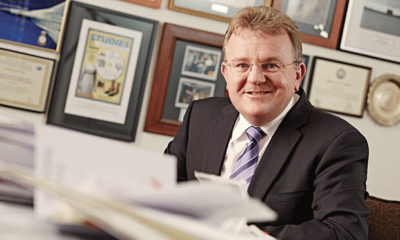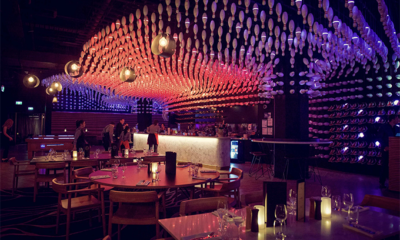By Erik Bigalk
Starting a business can be tough enough at the best of times, and with only 1 in 3 businesses surviving the first year of trading it’s easy to understand why. However, even for those that make it past the first year, around 60 per cent don’t make it past the three year mark. In fact, last financial year over 250 000 small businesses ceased operation and deregistered from ASIC.
However, once past the risky early years of getting their business up and running, the challenges don’t stop there, but rather come in different ways. One of the more under-recognised and hence overlooked risks is complacency. According Hassan Younes, an expert on the topic, when business is good, we are more prone to take unnecessary risk or worse get too comfortable in our success to notice shifting trends or heed warning signs.
Younes comes from a background in aerospace engineering with the likes of Boeing and has spent years as a management consultant. He is the founder of a series of successful businesses, is an international entrepreneur and business speaker and is the CEO of the Training College of Australia, an RTO focused on rising education and accreditation among small business operators. He is concerned with the staggering rate at which Australian small businesses fail at all stages of their life-cycle, but especially due to unnecessary oversight of predictable and preventable risks.
“Striving for success and growth is natural and is actually part of our DNA, however when we find success in our business, we tend to relax and get comfortable with where things are at. This is often overlooked and not seen as a stage of high-risk,” he says.
“What is most surprising is that when businesses make it past the challenges of the first few years, all too often they experience new challenges and too many go out of business not because they are doing it tough, but because they grew too comfortable,” Younes explains.
We have all heard about the disappearance of the likes of Blockbuster Video and Kodak in the face of disruptors such as Netflix and digital photography, but it does not have to come to such extremes in order to pose a serious risk to your business.
‘Either we are green and growing or are ripe and rotting’ goes the saying and as such, when we reach a level of comfort it can easily slip into complacency, which has already claimed enough businesses Younes argues. And, he knows this first-hand. His education business was doing great in 2007 and he recalls that complacency slipped in unnoticed and within less than 6 months it had slipped down to just 63% to be trading well below its break-even point.
Luckily, he recognised it in time and could turn it around through systemisation, internal restructuring and extra marketing efforts. However, the key message of this story is that it could have been avoided. Nearly losing your business of 10 years sends a serious message and not every small business is so lucky to come back from the brink of extinction.
“It is important to stay vigilant and constantly assess not only the business’ performance but also the potential changes and threats to your industry. This is paramount to future proofing your business,” Hassan says.
“The time to innovate is when things are going great, not when your business is failing or your industry is being disrupted,” he stresses.
In the face of technology evolving at lightning speed and major disruption expected across most of our major industries, it is inevitable that your business will be affected in one way or another. Just look at the ever-changing consumer behaviour and the fact that millennials already control almost 50 cents in the dollar of discretionary spending. Add, that their spending criteria is grossly different than their parents’ or grandparents’ generation, and you know that change is afoot, no matter which industry you are in.
For businesses to sustain in the current market and more importantly, to be able to adapt early or even lead the changes as they evolve in your industry, you cannot afford to be complacent about anything in your business. Not your staff moral, your target market, competitors, or changing key client habits. Nor your operational systems or mindset, says Younes.
This article was first published on Kochie’s Business Builders by Erik Bigalk, business writer, brand communication and marketing expert.
About the Author
Erik Bigalk is a Business Solutionist, Quantum Coach, Serial Entrepreneur and internationally published writer and speaker. He is the founder and CEO of multi-award-winning brand communications firm Smart Solutions.
www.erikbigalk.com www.smart-solutions.com.au





























